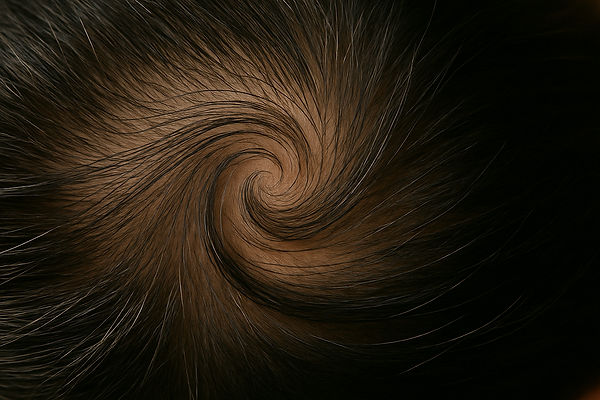
Clockwise Hair Growth Theory (CHGT) – Foundation of Unwindology
Clockwise Hair Growth Theory (CHGT) is the groundbreaking discovery that human hair spirals are not random—they are visible maps of deeper spiral tension patterns woven through the fascia, the body’s connective tissue network. This theory forms the foundation of Unwindology, revealing how these spirals encode trauma, posture distortions, and systemic imbalance. By understanding and unwinding these fascial spirals, we open new pathways to healing, pain relief, and whole-body coherence.
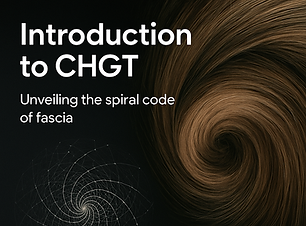
Introduction to CHGT
Clockwise Hair Growth Theory (CHGT) originated from seven years of research and over 21,000 hours of fascia unwinding by Douglas Chapman. It reveals that hair whorls on the scalp and body follow a predominantly clockwise spiral pattern that mirrors tension webs within the fascia beneath the skin. This discovery reframes skin features—like scars, cysts, and wrinkles—as manifestations of underlying spiral tension rather than isolated issues.
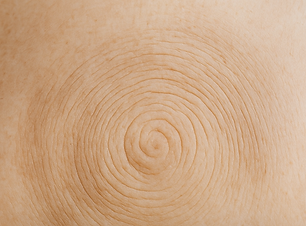
Manifestations of Spiral Tension Webs in the Body
CHGT explains how spiral tension webs manifest in everyday health concerns:
-
Wrinkles and premature skin aging caused by fascial pull.
-
Cysts and nodules as tension focal points.
-
Scar tissue and fibrosis anchoring spiral tension.
-
Varicose veins influenced by fascial constriction.
-
Moles appearing at spiral tension nexus points.
This biomechanical and bioelectric perspective offers new explanations beyond traditional medical models.
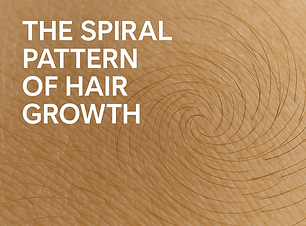
The Spiral Pattern of Hair Growth
Human hair follicles grow in distinct spiral whorls, most often clockwise, reflecting deeper developmental processes such as embryonic cilia rotation. These hair spirals exert subtle but cumulative mechanical forces on the fascia, shaping its tension patterns. Understanding this spiral growth gives insight into how fascia organizes itself and where distortions develop.
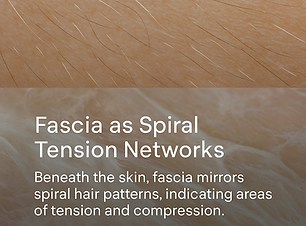
Fascia as a Spiral Tension Network
Fascia is a continuous, three-dimensional collagen web that envelopes muscles, organs, and bones. It acts as a dynamic tension network, influenced by spiral forces aligned with hair growth patterns. These tension webs propagate throughout the fascia, affecting posture, organ function, and skin appearance. The fascia’s piezoelectric properties convert mechanical tension into bioelectric signals, making it a key player in systemic communication.